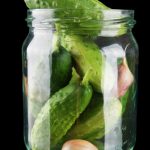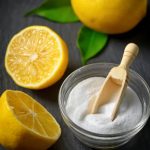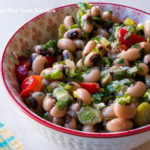Red, ripe, sweetly acid tomatoes are certainly one of the most prized of the summer vegetables. Let’s face it, tomatoes are only good during the summer and off-season ones just don’t taste like anything. In season the best solution is to grow your own or to know a gardener nearby. Greenhouse tomatoes are probably your best choice out of season.
Cherry tomatoes often have better flavor than regular tomatoes, and that is usually true out of season because they are greenhouse grown. Keep them at room temperature. Wash them before using, and when cut in half for serving they are certainly easier to eat.
To peel tomatoes, blanch the whole tomatoes. Drop 2 or 3 at a time into a large pot of rapidly boiling water and boil exactly 10 seconds. Cut out the core and peel the skin down from it. You may blanch tomatoes several hours in advance and peel them later. They keep fresher when still in their skins.
Many recipes call for tomato pulp, meaning you must seed and juice your tomatoes. To do so, halve the peeled tomato crosswise (not through the core). Then holding the half over a sieve set in a bowl, gently squeeze to dislodge most of the jelly-like substance, juice, and seeds; finally, poke out the residue with your finger. Press the juices out of the residue in the sieve and use in soups or sauce, or as a refreshing drink.
©Tiny New York Kitchen © 2020 All Rights Reserved
Many of us are preserving summer’s bounty to enjoy during colder months.
Here are tips on how to preserve using the hot water bath method. It’s really not difficult if you follow these easy steps.
High acid foods like tomatoes, pickles, salsa, jelly, pie filling, jam, fruit, and chutney are great for canning using the hot water bath method.
Preheat Jars
Fill water bath canner (or large pot) to cover empty jars by at least 1 inch of water. Heat jars to simmer (180 degrees F) to prevent jar breakage.
Fill Jars
Following a canning recipe, fill a hot jar with prepared food leaving enough space between the food and the rim (headspace) as indicated in the recipe.
Tighten Lids And Bands
Wipe any food from the rim of the jar. Center new lid on the jar, then twist on band just until fingertip tight.
Process Jars
Place filled jars onto rack in simmering water. If you don’t have a rack designed for home preserving, use a cake cooking rack. Filled jars should be covered by 1 inch of water. Place lid on canner and heat to a steady boil. Boil jars for the time specified in recipe. Adjust for high altitudes.
Altitude Adjustment
1,001 to 3,000 ft increase processing time 5 minutes; 3,001 to 6,000 ft increase 10 minutes; 6,001 to 8,000 ft increase 15 minutes; 8,001 to 10,000 ft increase 20 minutes.
Cool Down
Turn off heat and remove canner lid. Let jars stand in water for 5 minutes. Remove from water and cool jars upright on cutting board, wire rack or towels on countertop for 12 to 24 hours.
Check The Seal
After cool down, press on center of lid. If jar is fully sealed, the lid will NOT flex up or down. Remove the bands and gently attempt to lift lids off with your fingertips. Properly sealed lids will remain attached. Wipe canning jars, lids, and bands clean. Store sealed jars in pantry for up to 18 months. Jars may be stored with or without bands. If a lid fails to seal within 24 hours, immediately refrigerate the food product.
©Tiny New York Kitchen © 2020 All Rights Reserved
We all know that chickpeas are a fiber-filled addition to soups and salads, but have you ever thought about the ingredient that you’re leaving behind in a can of chickpeas? That thick, cloudy liquid that typically gets poured down the drain when chickpeas are drained. That liquid id called aquafaba, and it might just be the ingredient your baked goods and cocktails are missing.
Aquafaba is the liquid that’s leftover when dry chickpeas are cooked, and it is the brine that canned chickpeas soak in to maintain freshness while sitting on grocery store shelves. You should save it because it’s an excellent vegan egg substitute that can be used in baked goods, to emulsify vegan mayonnaise to add a foamy element to your favorite cocktails, and so much more.
To use aquafaba shake it in a cocktail shaker for an extra frothy espresso martini or whisk it alongside a thin stream of olive oil for a vegan aioli. Although the liquid from other beans (like black beans and kidney beans) could work just as well, chickpeas don’t give off any color, so the resulting clear, yet slightly cloudy, liquid is much more versatile. Another nice thing about aquafaba is that you don’t need to use too much of it. Generally, three tablespoons of aquafaba will replace one egg.
Aquafaba has a mild buttery and bean like flavor, but it easily takes on the flavor of what it’s added to and tends to cling to other flavors quite well, which explains why it works well in mayonnaise and in cocktails. Aquafaba should be stored in an airtight container in the refrigerator for up to 3 days.
Aside from the benefit of replacing an animal-based product with a plant based product, aquafaba doesn’t have a lot of nutrients, and it certainly has less protein than an egg does. It’s low in calories and carbohydrates, but it’s also pretty low in vitamins and minerals. If you aren’t vegan then there aren’t a lot of health benefits to using aquafaba over regular eggs. It is a good step in preventing food waste, though.
©Tiny New York Kitchen © 2020 All Rights Reserved
For many years I have used my fancy dishes, even for my morning breakfast. Now that we have been at home more than ever, it seems especially important that this is the time to use them. Why save special plates for company or holidays? Pull out your grandmother/s china. Even if it’s for dinner with the kids on a Wednesday night or a midday snack. Beautiful things are made for using!
©Tiny New York Kitchen © 2020 All Rights Reserved
Is there anything better than ripe, juicy summer tomatoes? Tomatoes shine in salads, as toast toppers, and in pasta.
Heirloom tomatoes are grown from seeds that have been passed down through generations and are not modified in any way. They come in hundreds of varieties.
The tomato is technically a fruit because it contains seeds. Still, in 1893, the U.S. Supreme Court ruled to classify it as a vegetable since that’s how it is used in cooking.
Unripe tomatoes won’t ripen in the fridge. Keep them on your counter until they are ready to eat.
The first tomatoes to arrive in Europe were called love apples, apples of paradise and golden apples. Some were considered too pretty to eat and used as table decorations.
22 pounds of tomatoes are eats per person per year in the U.S. About half of that comes in the form of ketchup and tomato sauce.
30,000 is the number of tomatoes produced in one year by the world’s largest tomato plant. They were grown in the greenhouses at Disney World.
25% of your recommended daily amount of vitamin C is in 1 medium tomato. Tomatoes are also high in vitamin A, vitamin E, and lycopene (an antioxidant that can improve your heart health and lower your cancer risk.
“Work With What You Got!”
©Tiny New York Kitchen © 2020 All Rights Reserved
Keeping a house clean is important and keeping your cleaning arsenal simple and healthy is even more important.
Store your DIY concoctions in glass bottles, which contain no harmful chemicals and are better for the environment than plastic. Look for a brown variety to help keep light from breaking down compounds within.
Use essential oils. They smell wonderful, but many plant-derived essential oils also possess antimicrobial attributes, meaning they can help negate unwanted elements such as bacteria, fungi, and viruses. Add a drop or two to a cleaning solution to amp up the aroma and the cleaning power.
All-Purpose Cleaning Spray
Make this your go-to cleaner.
1 1/4 Cups Water
1/2 Cup White Vinegar
10 Drops Essential Oil
Pour ingredients into a glass spray bottle, using a funnel if you have one, and mix contents. Spray liberally on surfaces and wipe clean with a soft cleaning cloth.
Sink Scrub
Works on porcelain, stainless- steel, acrylic, copper, stone, and solid surfaces.
2 Cups Baking Soda
20 Drops Essential Oil
Castile Soap Or Dish Soap
Put baking soda in container. Add essential oils and stir to combine. Wet sink, sprinkle scrub liberally, add a squirt or two of castile or dish soap, and scrub. Rinse thoroughly.
Glass & Mirror Cleaning Spray
Toss the blue stuff and use this instead.
2 Cups Water
2 Tablespoons White Vinegar
2 Tablespoons Rubbing Alcohol
5 Drops Peppermint Essential Oil
Pour ingredients into a glass spray bottle, attach sprayer, and shake to mix.
“Work With What You Got!”
©Tiny New York Kitchen © 2020 All Rights Reserved















